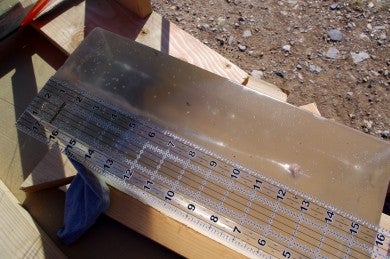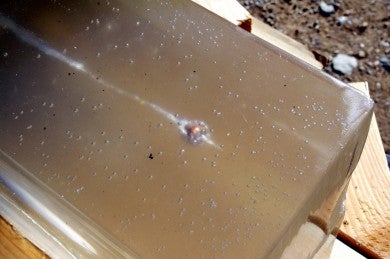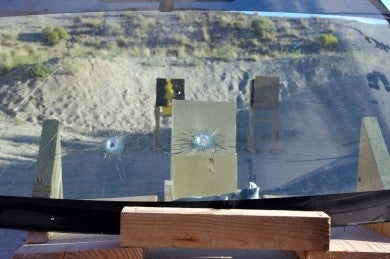Background
This is a six part series of which this is PART 4. (you can find links to the rest of the parts at the end of this article).
Thomas Gomez and I were approached about doing a test shoot of four different defense rounds:
- 9 millimeter Radically Invasive Projectile, R.I.P from G2 Research.
- 9 millimeter Xtreme Penetrator from Lehigh Defense.
- 9 millimeter Inceptor ARX from Polycase
- 9 millimeter Civil Defense from Liberty Ammunition.
The company that made the request, strangely, was not a manufacturer–it was Clark Armory. They were interested in having TFB perform an independent review (though pseudo-scientific as we will explain later) of some of the defense rounds that they sell. Of course we accepted.
Disclosure: They did not pay for this review though they did send us two boxes of each of the four rounds, two ballistic gels from Clear Ballistics (and the necessary stuff to reset the gels for reuse). All of the other materials we provided along with nine range trips, and the countless hours Thomas Gomez spent melting and resetting the gels.
Session 5, G2 Research and Civil Defense, Automotive Glass

So, all of our previous tests were pretty easy. We set up two tables, ten feet apart, gel on one, shooting platform on the other. Easy, peasy. Then Thomas brought out his “Automotive Glass Angling Platform for The Accuracy Testing of Defense Rounds Against Gel” (he is going to be patenting this construction and probably selling it in the near future). One of the FBI test descriptions we found (http://clearballistics.com/about-ballistic-gelatin/) called for the glass to be angled at 45 degrees from vertical and at a 15 degree offset from horizontal, with the gel being eighteen inches behind the glass. You know, to simulate popping someone’s grape from an off angle. Thomas built a contraption to do just that, but it was big. Too big for one table to hold. Which we didn’t figure out until we were setting up, miles away from home with only the two tables in the Jeep. Remember me mentioning “pseudo-scientific”…?
So, what did we do? We improvised. Both tables were devoted to holding the glass and gels, and, as it turns out, the lift on my Jeep put it at the right height to use as a shooting platform. Assuming I opened both doors and shot through the interior, using the passenger seat as a platform for the bench rest. Part of the problem shooting gel is that you need to shoot level, or you risk introducing an angle as the round transverses through the gel. Later on we figured we probably could have shot from flat on the ground, but it seemed much cooler (and obviously much more photogenic) to shoot through the vehicle.
Observations
When shot through automotive glass, the R.I.P round from G2 Research did not expand and shed its trocars. The hollow void at the tip of the round filled with glass and penetrated 12.2 inches. This round would pass the F.B.I test. The round slightly mushroomed and went from .357 inches to .535 inches.
When shot through automotive glass, the Civil Defense round from Liberty Ammunition did not expand. The hollow void filled with glass and the round traveled 9.8 inches. The round mushroomed upon stopping in the gel. The round went from .357 inches to .530 inches. This round would not pass the FBI test.
Session 6, Lehigh and Inceptor, Automotive Glass
As expected the Lehigh defense cut right through the glass. And gel. And an endangered hippo in the backstop. There was almost no deflection of the round, and we, again, were unable to recover any of the bullet (no fragments were left in the gel; the hippo exited stage right).
As I mentioned before, some of our video was crappy. Yep, this was one. The video was surprisingly sharp. So sharp that the glare from the sun obscured the path of the round.
Observations
When shot through automotive glass the Xtreme penetrator from Lehigh Defense completely penetrated the ballistic gel. There was a slight increase in the permanent wound cavity starting at 3 inches and ending at 9 inches. The permanent wound cavity reached its apex at 7 inches gouging out a permanent wound cavity of .5 inches. This round would pass the F.B.I test.
When shot through automotive glass, the Inceptor round from Polycase, broke into multiple pieces upon hitting automotive glass. The round fragmented into dozens of small fragments as well as 3 larger fragments. The largest of the fragments penetrated 6.8 inches. The spread of the fragmentation was 2.5 inches. Please note the gel was 18 inches from the automotive glass. This round would not have passed the FBI test.
Articles in Series
Note: The below links are not immediately live. Each part will be released a day apart (by Dec 7th all should be available).
Introduction
Session 1 – Bare Gel
Session 2 – Heavy Clothing
Session 3 – Automotive Glass
Session 4 – Drywall
Observations and Conclusion
 Your Privacy Choices
Your Privacy Choices








